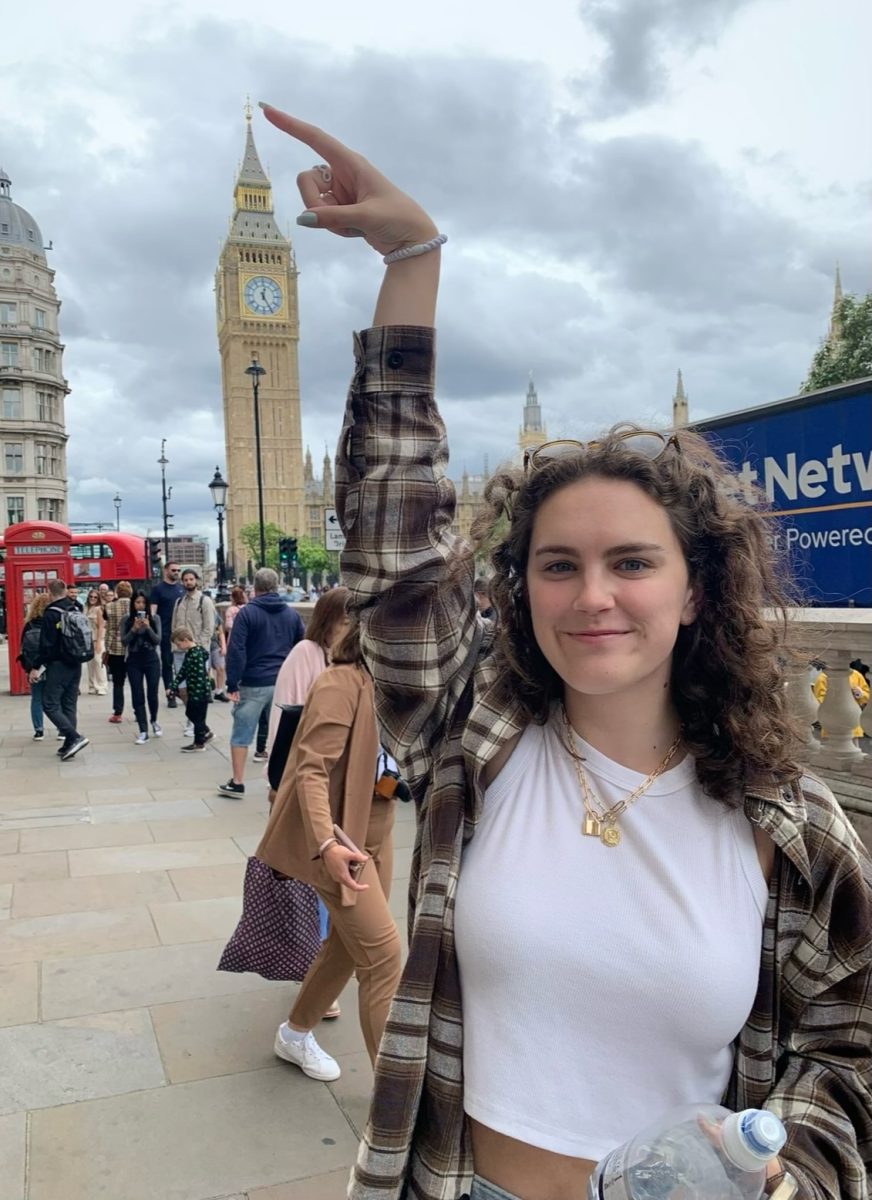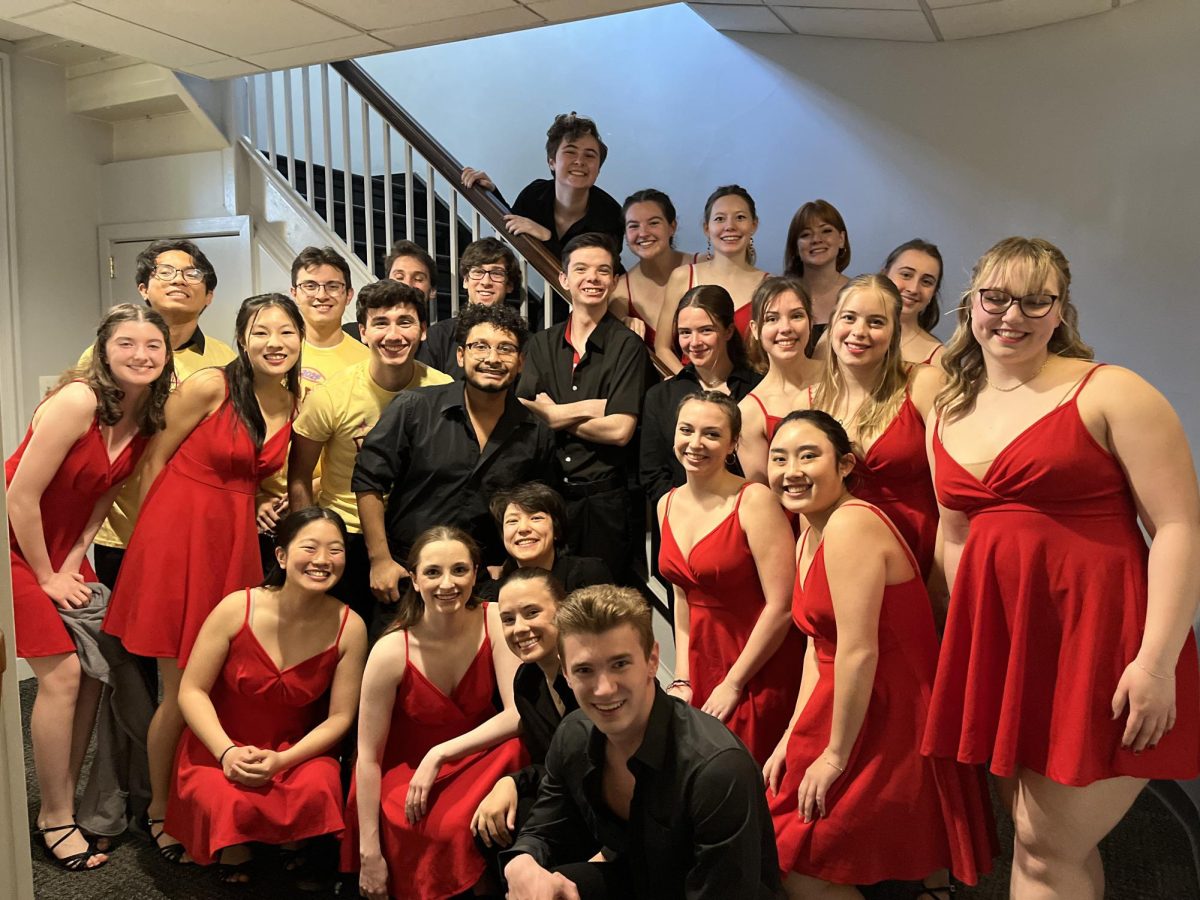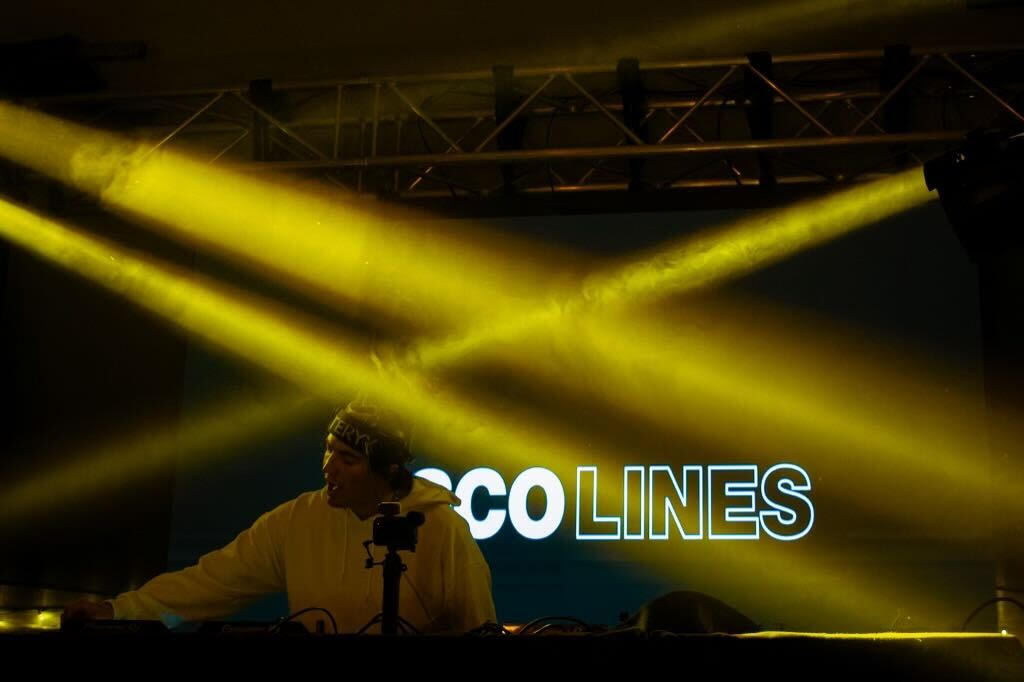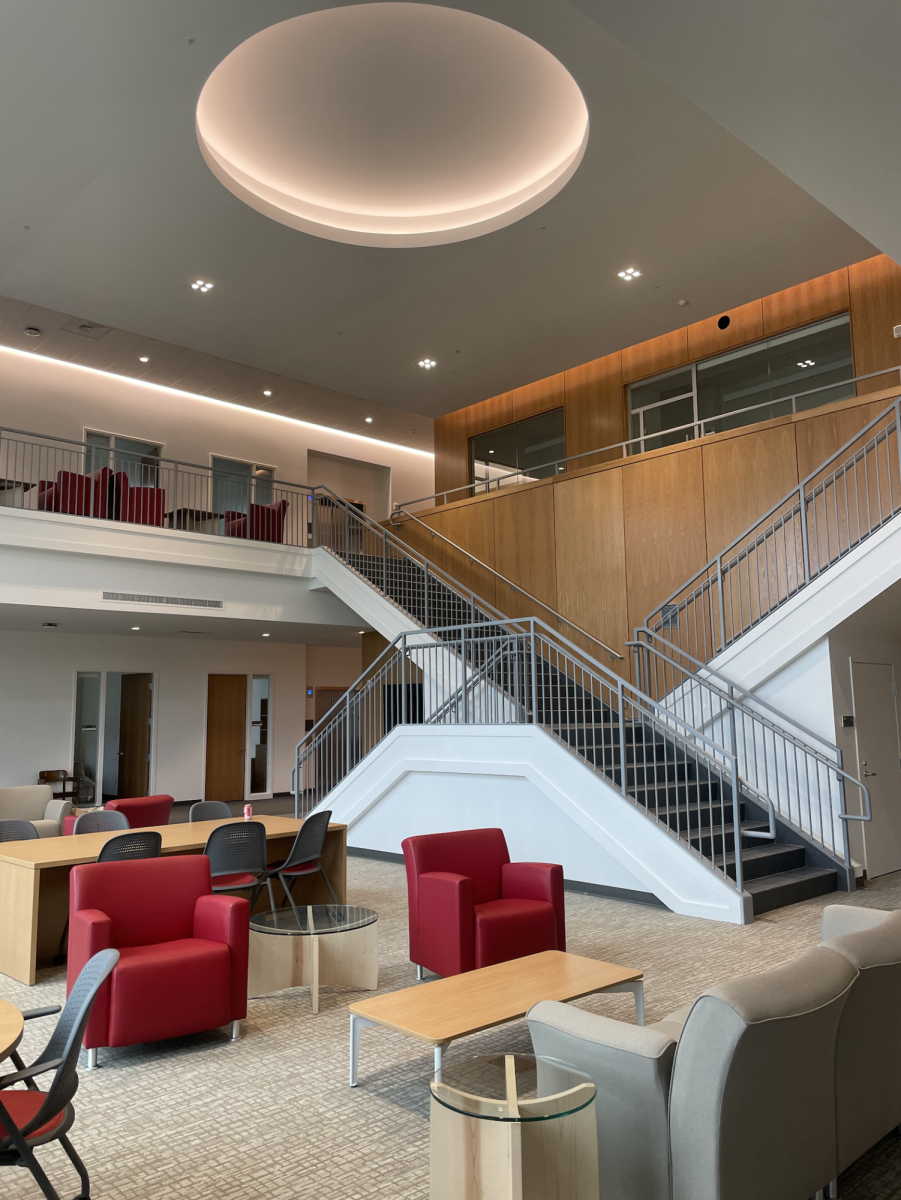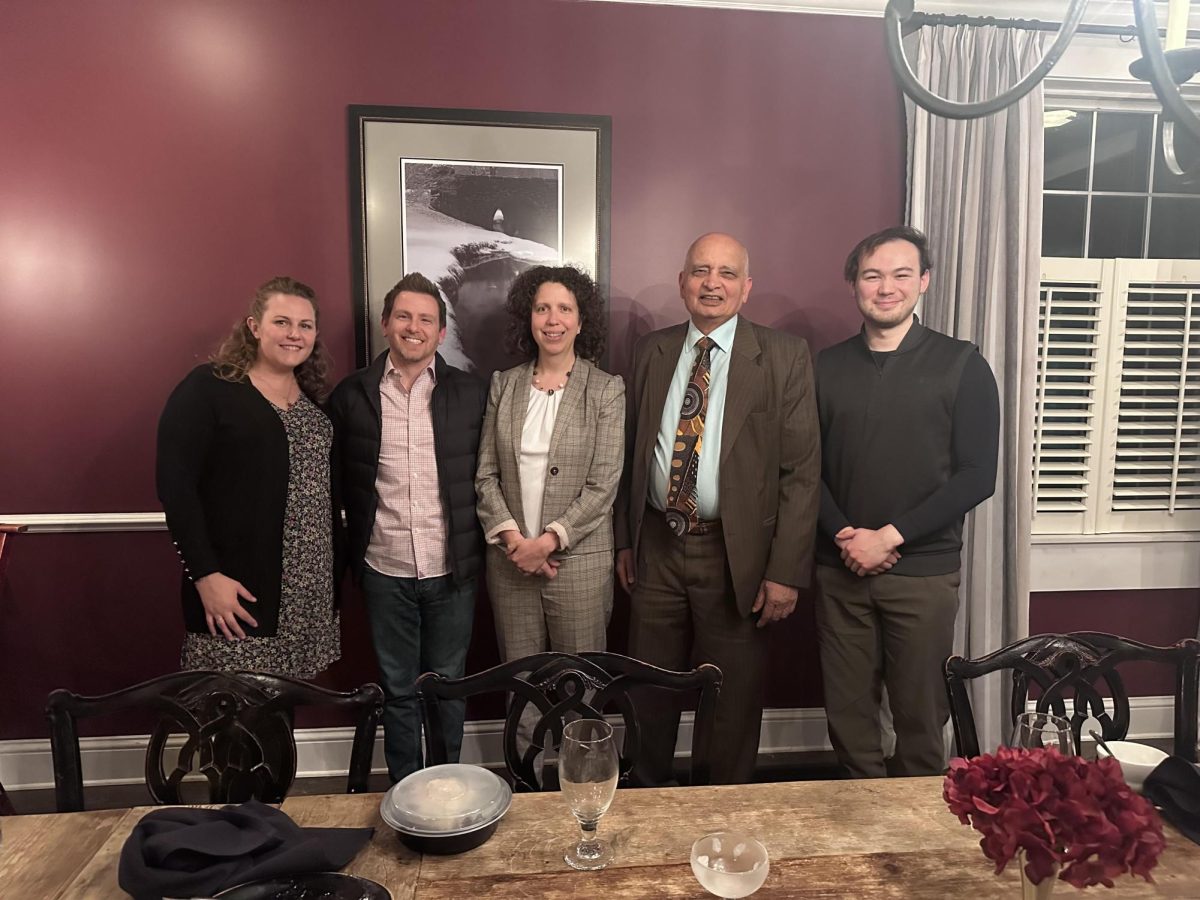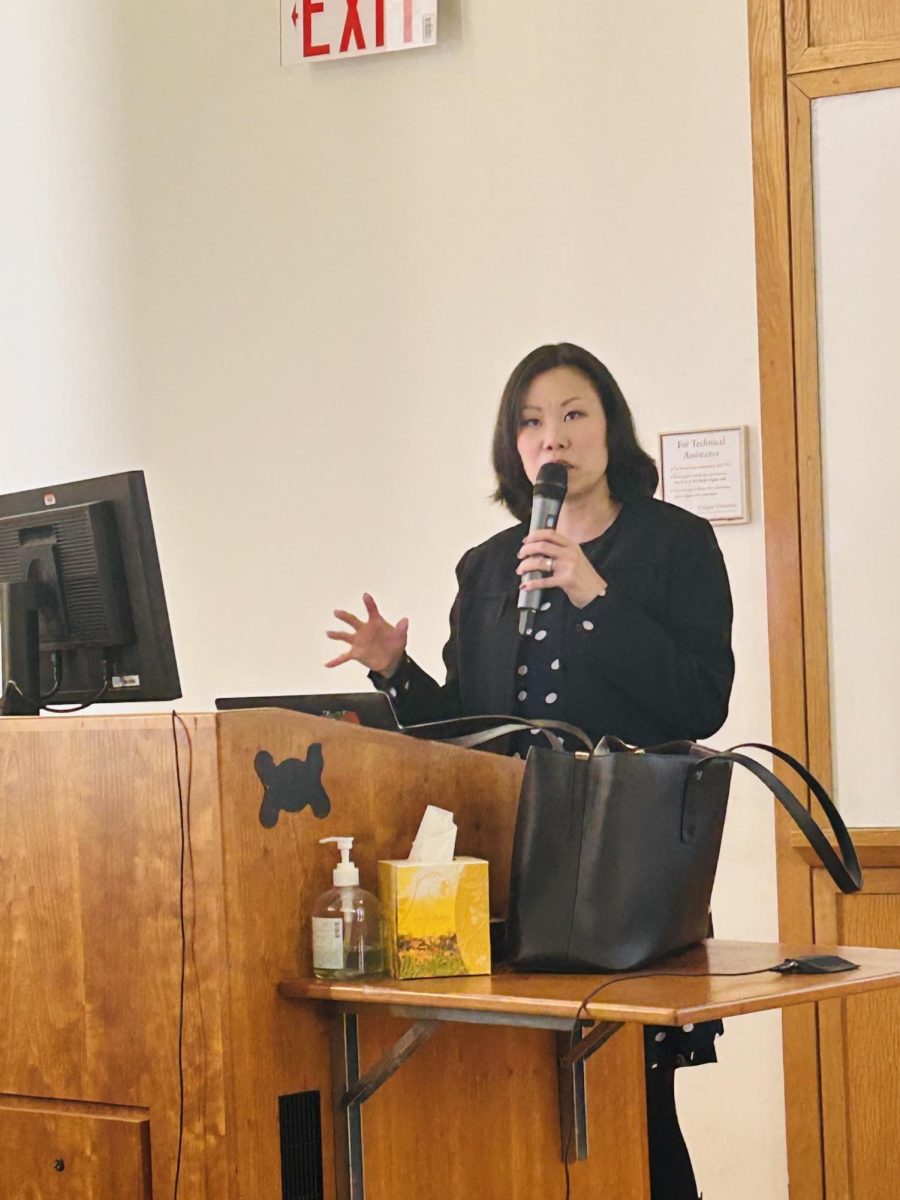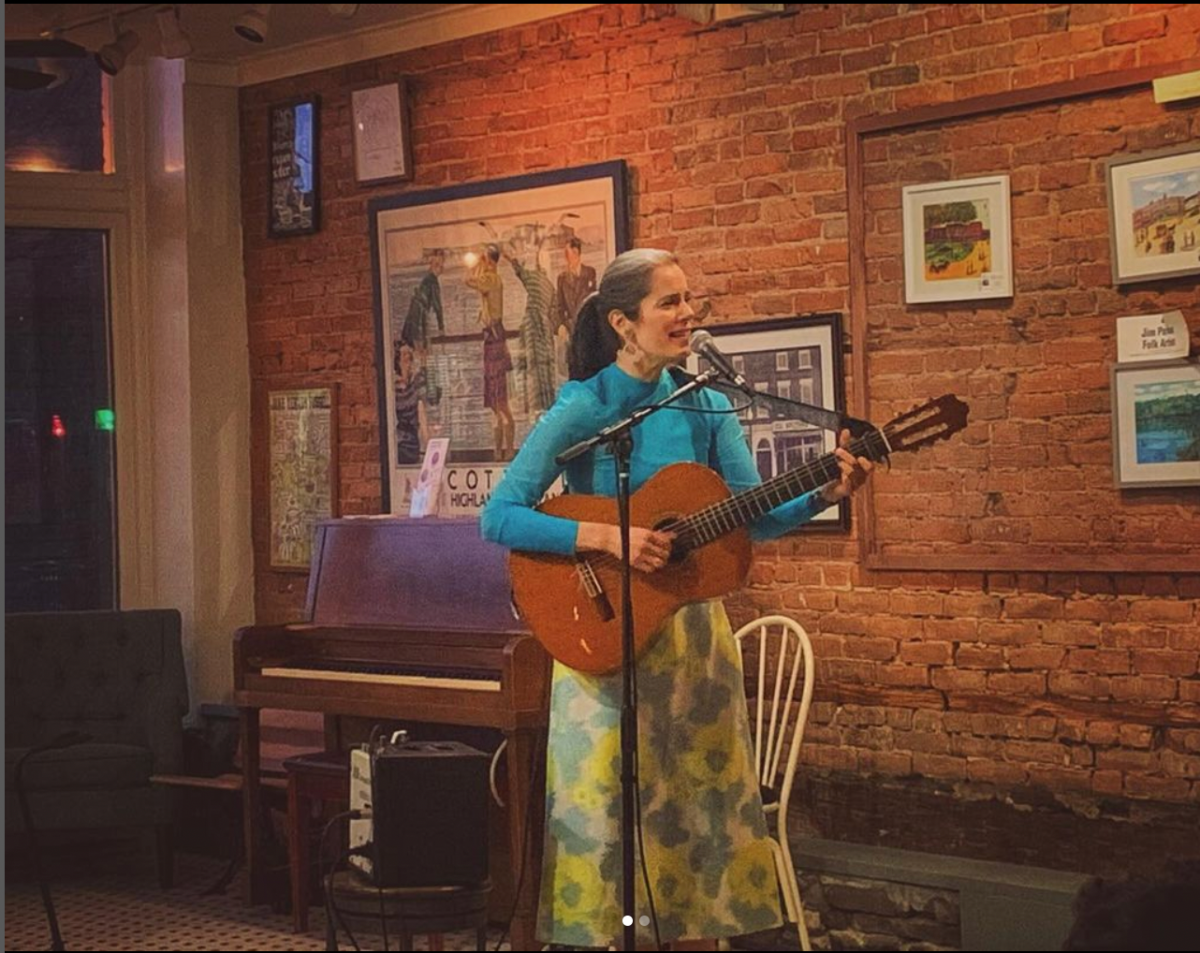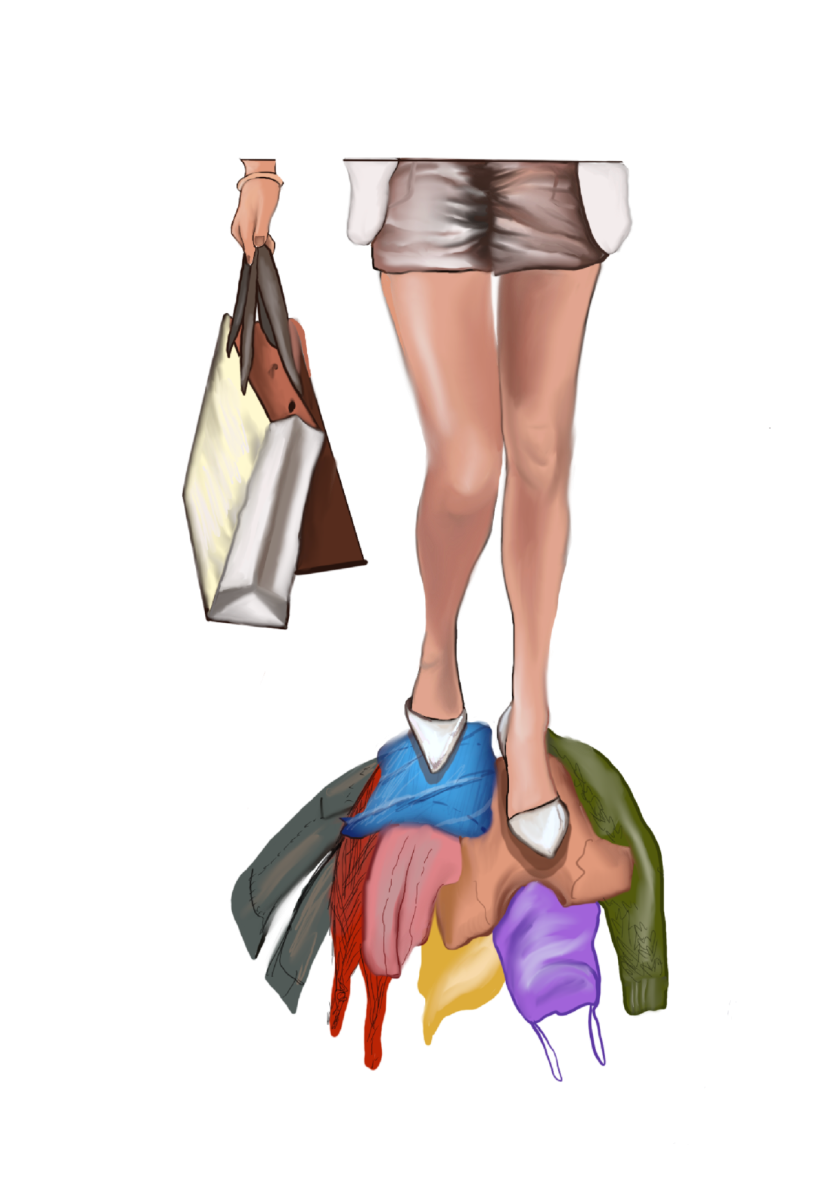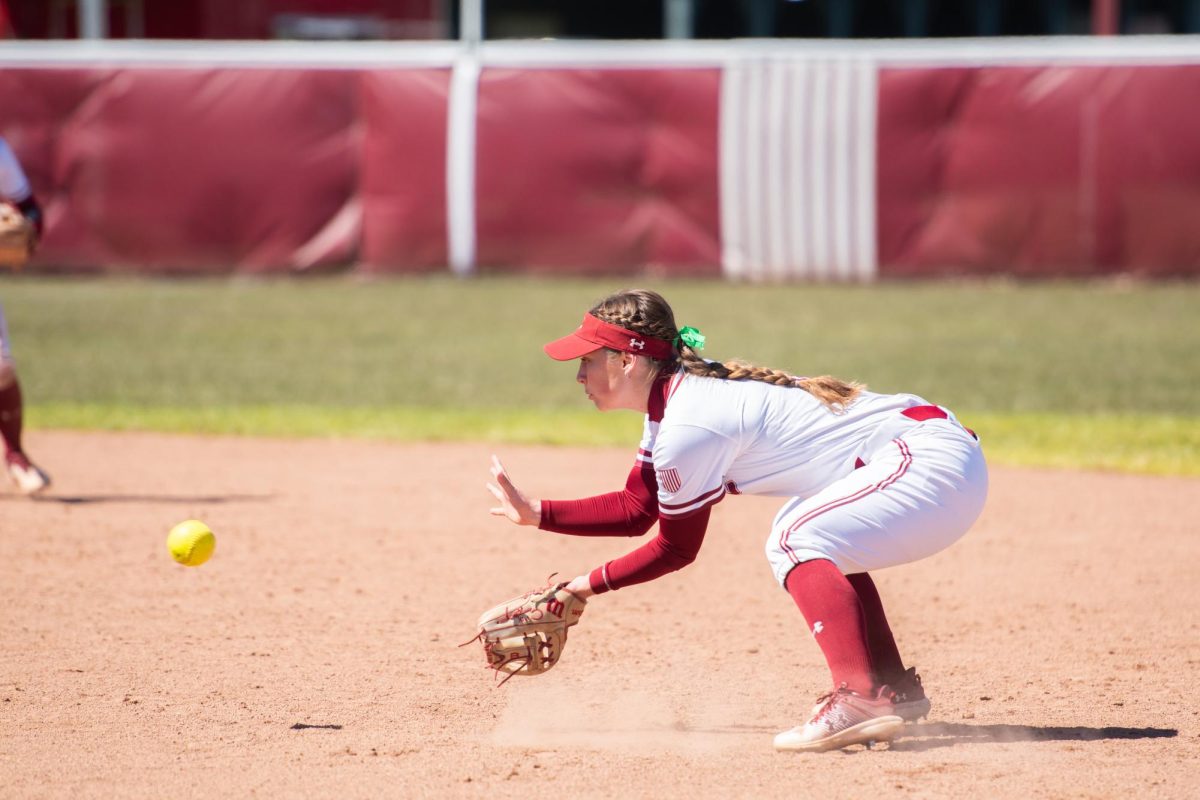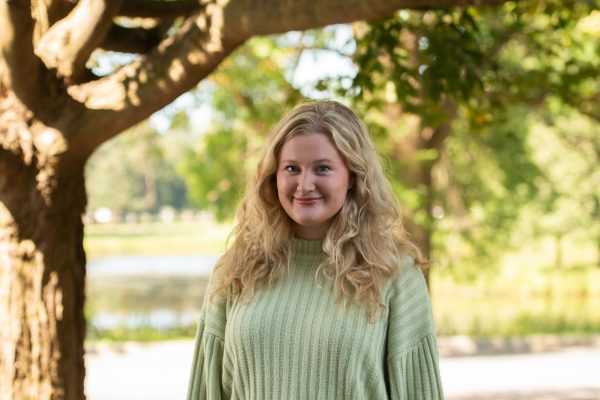The Center for Women’s Studies hosted a Brown Bag series event with Dr. Ela Przybylo titled “Asexuality’s Glorious Queerness: Compulsory Sexuality, Amatonormativity and Gender” on Tuesday, Feb. 20. Przybylo is a scholar and author who has extensively examined gender and sexuality throughout her career. She focuses on the study of asexuality, as discussed in their book, “Asexual Erotics: Intimate Readings of Compulsory Sexuality.” During the event, Przybylo discussed how asexuality challenges expectations of romance, sexuality and gender through media and literary examples. Additionally, they led the audience through an engaging zine-making activity during the lecture to reflect on the topics.
Pryzbylo explained what asexuality is and why it is important to understand asexuality throughout in order to understand broader issues surrounding gender and sexuality.
“The educational and community platform ‘Aces and Aros’ usefully describes asexuality as ‘a sexual orientation where a person experiences little to no sexual attraction to anyone and/or does not experience desire for sexual contact,’” Przybylo said. “Asexuality is a minority sexual orientation — a way of being and being drawn to others that is in stark contrast to contemporary dominant ideas around sex and gender that take for granted that people will be sexually attracted to one another, that this defines a person’s gender and that we should build our lives along these lines.”
Przybylo explained that mainstream culture often assumes that everybody experiences sexual attraction, even though that is not the case. This assumption is because of the theory of compulsory sexuality.
“The compulsoriness of sexuality rests on assumptions that sex is needed for healthy relationships and to be happy and whole, and that one must understand oneself on sexual terms, using the mechanism of sexual attraction,” Przybylo said.
Additionally, contemporary culture promotes sexual attraction as the only form of attraction, even though there can be other types, like romantic or platonic attraction.
“Such a multi-faceted approach to attraction queers the way in which it has been understood narrowly as only ever sexual, when in fact the ways in which people relate are always complex, varied and in excess of being solely sexual,” Przybylo said. “For example, queer platonic relationships might involve members of the relationship being attracted to each other in ways that are not sexual but that are nonetheless intimate and deep.”
Przybylo discussed how many people assume that being asexual and being aromantic are the same; however, they are different identities that can overlap for some individuals. Asexual individuals experience little or no sexual attraction, whereas aromantic individuals experience little or no romantic attraction.
Throughout her talk, Przybylo analyzed works from activists, scholars and authors like Kim TallBear and Audre Lorde. They particularly emphasized that sexual representation and conversations are often rooted in whiteness, and it is important to recognize this issue and honor asexual people of color in the community to propel inclusive discussions in the future.
“It is especially important to recognize that while asexuality does not belong to any one racialization, it has been ‘whitewashed,’ including through white supremacist conflations of whiteness with sexual purity and the hypersexualization of black, Indigenous, brown, Asian, Latinx and people of color,” Przybylo said. “Many activists and writers of color are pushing back against this overrepresentation of whiteness in asexual communities.”
Pryzybylo emphasized that while contemporary culture promotes compulsory sexuality in many ways, there is also rising activism for audiences to look into. There are many scholars and social media users who are asexual activists. For example, a side of TikTok users can explore is ‘AceTok,’ which has educational content about asexuality and content that is made for asexual users in particular. Additionally, Pryzybylo recommended Alice Oseman’s young-adult graphic novel series and the Netflix show based upon that series, “Heartstopper,” which features many queer identities. Pryzybylo analyzed a specific character, Isaac, during the event.
“‘Heartstopper’ also does something else, something that is just about unprecedented in mainstream teen shows. It places at its core an aromantic asexual character — that is Isaac — and asks that the audience see the world through his eyes, in something that resembles a sort of ace and aro gaze,” Przybylo said.
Senior Millie Atkins attended the Brown Bag event and enjoyed the zine-making activity that occurred throughout the event because she felt it made the talk interactive. Additionally, Atkins was excited that Przybylo examined Alice Oseman’s “Heartstopper” through an academic lens.
“I was crying by the end of the talk during the speaker’s explanation of Alice Oseman and the brief clip shown of the asexual character from ‘Heartstopper’. Oseman’s work has been so important to me in identifying and understanding myself as an asexual person that it was emotional to see their work portrayed in a scholarly, academic context,” Atkins said. “It was euphoric to feel that asexuality is being taken seriously as a valid point of study rather than just some niche identity to tack on at the end of other, more ‘relevant’ discussions of queerness.”
Senior R Hunsicker, who is a student activist for LGBTQ+ on Colgate’s campus and an intern in the Office of LGBTQ+ Initiatives, was excited that they got to meet Przybylo.
“Meeting Dr. Ela Pryzybylo in person is a dream come true. As one of the few asexuality studies scholars on this campus, the ability to not only meet but talk about asexuality studies with a scholar who knows the field and the language filled me with a sense of relief, belonging and joy,” Hunsicker said. “It was the first time I met a professor who knew more about the field than I did. She introduced me to new resources, concepts and topics within the field rather than me having to scrounge and dig for them myself. Just meeting another ace studies schola — let alone [learning] from one — was an honor.”
Additionally, Hunsicker mentioned at the event that there is an LGBTQ+ book club on campus that meets every month for students to engage with.
“LGBTQ+ Initiatives does an LGBTQ+ book club every month,” Hunsicker said. “I started this book club two years ago to bring more LGBTQ+ conversations to campus, allow more people to learn about LGBTQ+ identities and for queer students to feel represented in literature. Each month has a different theme to celebrate the experiences and identities that make up the queer community.”
Pryzybylo closed out her talk by emphasizing the importance of asexuality and how it can add to deeper conversations about culture, gender and sexuality.
“As I have been exploring, asexualities help us get at another layer of critique around heteronormativity, challenging the affixation to the idea of romantic and sexual love at any and all cost,” Pryzybylo said. “Asexually-attuned representations, as the ones I am ending with, articulate a different erotic that is grounded in something that queer youth cultures have always been drawn and energized by but which are now coming into fuller articulation: the importance of non-sexual and also non-romantic relationships to community, intimacy and political agitation,” Pryzybylo said.





